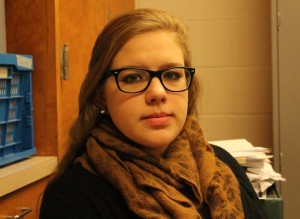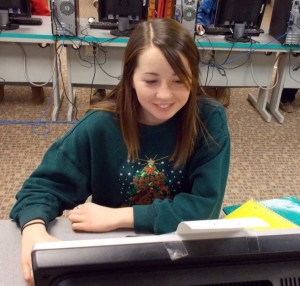Preserving where the wild things are
School embarks on a major recycling effort

The shift toward recycling has had a noticeable effect
Each hour Americans throw 2,500,000 plastic bottles in the garbage. If these bottles were recycled, 500,000 square feet of carpet could be created from the bottles accumulated in that hour. Every year, one billion trees are cut down in America for paper, which dramatically reduces the amount of CO2 emitted into the air. This amount of paper could heat 50,000,000 homes for as long as 20 years.
If people started recycling their waste products, instead of trashing them in nature, good tendencies would lead to the preservation of wildlife around the globe. Doubtful people may believe that it’s hard, making a difference. The truth is that the Cannon Falls Schools has the opportunity to make a promising impact on the environment through recycling, as the school is the largest producer of waste in town. Currently, 30% of what the school recycles goes into the blue bins to be reused, which means that 70% is thrown in the garbage and dumped in landfills or transported to incinerators. Statistics from Green Waste say that 75% of solid waste is recyclable. The school should be producing double the recycling that it currently accumulates. Every day, hundreds of pieces of paper make their way in and out of the hands of teachers and students, thousands of trees in a year. Students purchase plastic bottle drinks from a la cart, and staff and students drink cans of soda. Simply recycling these items could eventually make a world of difference.
I recently sat down with the head of the janitorial staff, Dave Peterson, to see how we could tackle this issue. He agreed that Cannon Falls needs to move towards a more green school and worked along side me to find many possible options for improvement. He informed me that the school recently started using a commingling recycling company. Putting this more clearly, all recyclable items can be tossed into the same blue recycling bin. Whether it’s paper, plastic, glass, cardboard, or aluminum, it will all end up reused to make new products. With the generous donation of the Education Foundation 12 new recycling bins will be distributed throughout the hallways of the high school. Instead of the school’s recycling dumped into the Earth, cans will be shipped to factories to be created into new cans. Plastic bottles will be formed into carpet, plastic lumber, and textiles. The school’s cardboard will turn into cereal boxes. Glass will become new bottles. Magazines will be transformed into envelopes. Paper will be molded into tissue paper. The school’s effort will keep more places on Earth from being rearranged by the hands of men.
The planet is home to every wild being. Every creature forms its family within the trees, water, rural environment, and cities on Earth. Relationships exist through the bonds that people create among their surroundings. We have a responsibility to take care of the environment that we live in, because without it relationships, happiness, and every pleasant feeling that people have would be nonexistent.
“The human spirit needs places where nature has not been rearranged by the hands of man.” Imagine the most exquisite view in the world. For people who have witnessed, it’s the lookout of the Himalayan Mountains in Nepal. The beautiful scenery of a sunset over the paleozoic carved rock of the Grand Canyon is another breathtaking view. The crystalline water that surrounds the Fiji Islands is considered a dazzling sight. But sail north and experience an entirely different island, one completely man made. People familiar with this mass recognize it as the “Great Pacific garbage patch.” A prime example of the effects of the human touch, garbage dumped into the Pacific Ocean has compiled and formed a giant island of plastic in the middle of the wondrous Pacific. It is not only contaminating the ocean but also harming wildlife in and above the water. Thousands of birds have created their homes on the island, consumed the plastic, and choked to death. Breathtaking spaces in the environment are becoming more difficult to find as garbage is dumped on the Earth and habitats are destroyed.
Improvement will only happen if everyone becomes involved. Every student and faculty member needs to be conscious of where they put their garbage. In one day 524 pieces of paper, 27 cans, and 142 pieces of plastic were thrown into the garbage in this school. It’s time to take the initiative and become responsible for the care of the wild things on the planet. This project will become a lifestyle for the school. By Earth Day, the hope is to have an 80% production of recycling. It’s time to get started.

Jackson is the Video Editor for the Lantern. He is a senior, and next year he hopes to move out to California to study film production. His hobbies include...

Mary is a writer and photographer for the Lantern. She is involved with musicals, one-act plays and the speech team.

